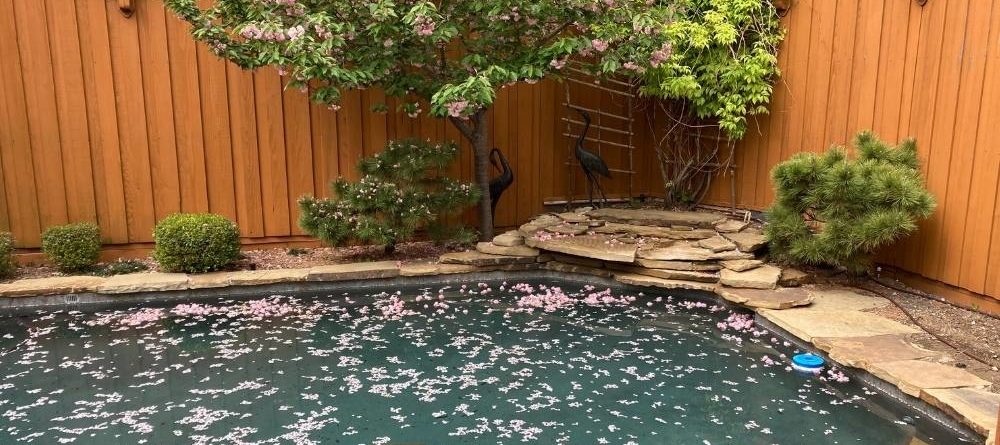How His Garden Grows: Barry Bloom
Barry and Susie Bloom’s back yard in Far North Dallas had a pond, but not the good kind. Their swimming pool was covered in a three-inch, dark green layer of algae. Looking for a solution to this mucky mess, an internet search led Barry to Japanese Pond Gardens. Barry was hooked. Fast forward nine years to today and you’ll find Barry and his wife Susie have transformed their traditional suburban landscape into a Japanese-style garden oasis.
Barry, a Dallas County Master Gardener, consulted a modern translation of the 1000 year-old gardening book, the Sakuteiki, or “Records of Garden Making.” The Sakuteiki was written by a Japanese court noble in the 11th century and is believed to be the world’s first gardening book. Barry and Susie also visited eight Japanese Gardens (some on several occasions) including: the Japanese Gardens in Portland, Oregon; Fort Worth, Texas; and Victoria British Columbia, in Canada.
Barry fell in love with the intermingling of basic concepts of Shintoism and ancient Asian myths while creating a space that mimicked nature in miniature. Eliminating the pool deck, Barry started adding stones and garden beds in curved, rather than the angular shapes that are not found in nature. Instead of relying on black algae to create a pond-like color, he replastered the pool in a dark blue and added a waterfall.
According to Barry’s research, stones and bolders are an important element of a Japanese garden. Barry explained that stones and boulders, especially those found in the natural landscape, served the ancients as prayer sites. The ancients believed that by virtue of these stones and boulders the gods could be coaxed from heaven to earth to bless the world with health and prosperity. A Cloud Schist Boulder holds a stately presence in Barry’s front yard. And several others adorn the backyard along with smaller, brown, “Moss Boulders.”

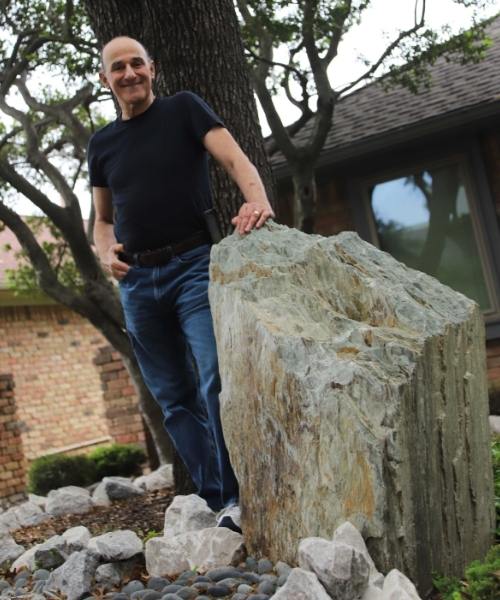
Other elements of the Japanese garden include water, whether real (actual water) or symbolic (dry creek bed), gravel or small stones, paths and walkways, bridges, walls, gates, fences, and lanterns. Barry’s dry creek bed is work of art with stones carefully placed to invoke rapids, currents, flowing water, and scenic shorelines.
Barry’s garden is home to two Japanese cherry trees (Sakura), Japanese wisteria, Japanese maples (Crimson Queen and Sango-Kaku), Nandina Domestica (sacred bamboo), Japanese black pines (dwarf), Japanese Podocarpus yew, Hicks yew, Blue Atlas cedar, hostas, Japanese mondo grass, evergreen oaks, irises, a weeping redbud tree, yaupon holly, Japanese holly ferns and other ferns, and shore juniper.
One plant mistake Barry made was adding black bamboo. While it is beautiful and unusual with its ebony-colored canes, it spreads and grows invasivily through rhizomes. It has taken Barry about six months to remove it from his garden.
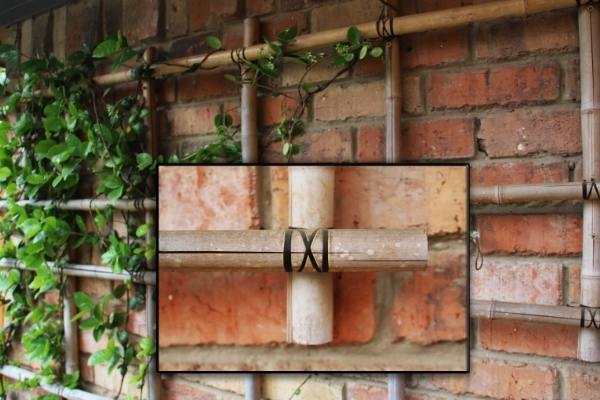
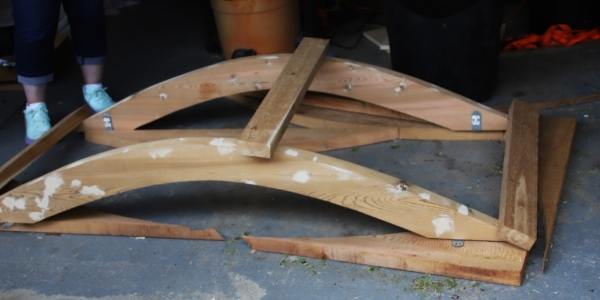
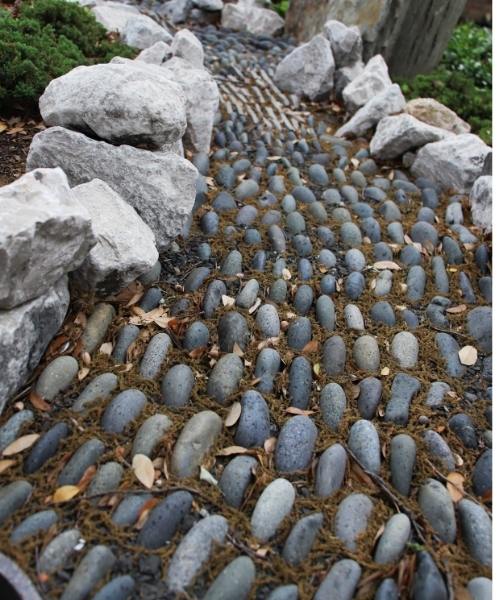

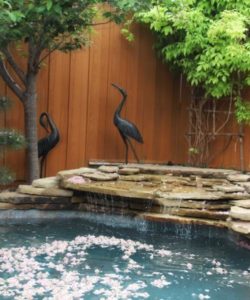
The calming effect of the backyard waterfall as it intermingles with the sound of wind chimes is one of Barry’s favorite aspects of the garden. “I can sit for long periods with my eyes closed as I mentally travel to wherever my imagination may take me,” he said. He particularly enjoys viewing the dwarf Japanese black pines with their beautiful shape and color.
Transforming his landscape is not a one-and-done effort. Barry said that maintaining the beauty of nature in a miniaturized peaceful, calm, and serene form is ongoing. For example, Barry has his yaupon hollies trimmed into cloud-like shapes by a certified arborist. He prunes frequently to ensure that plant shape is maintained. He also waters some plants by hand to meet the moisture demands of thirstier plants.
Barry’s to-do list includes completing the stone river in his front yard. He is building the curved wood bridge himself—a task that is paramount since the bridge defines the continuing direction of the stone river. ”It must be completed so I will know where to lay the rest of the stones,” said Barry. And when the wooden bridge is built and the stone river completed, will Barry finally be finished?
“I will be finished when I die or move from this house,” he said.
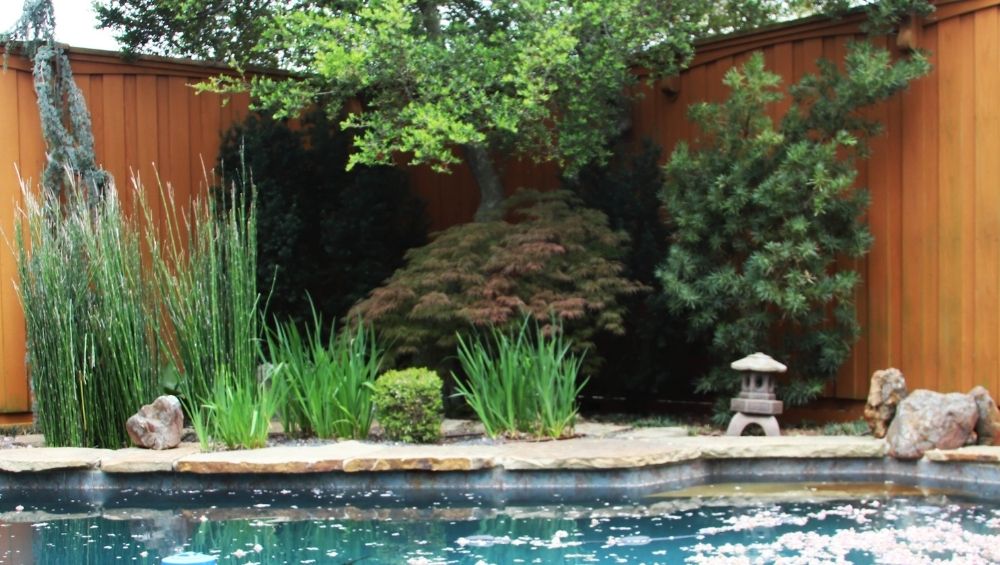

Debbie Pochmann has worn many hats–journalism teacher, lawyer, and photographer. Her favorite hat is the straw one she wears while tending her vegetable garden and 50+ containerized fig trees. She is currently binging on furniture refinishing. She lives with her husband and ancient dog Rusty in Farmers Branch. Debpix@sbcglobal.net

